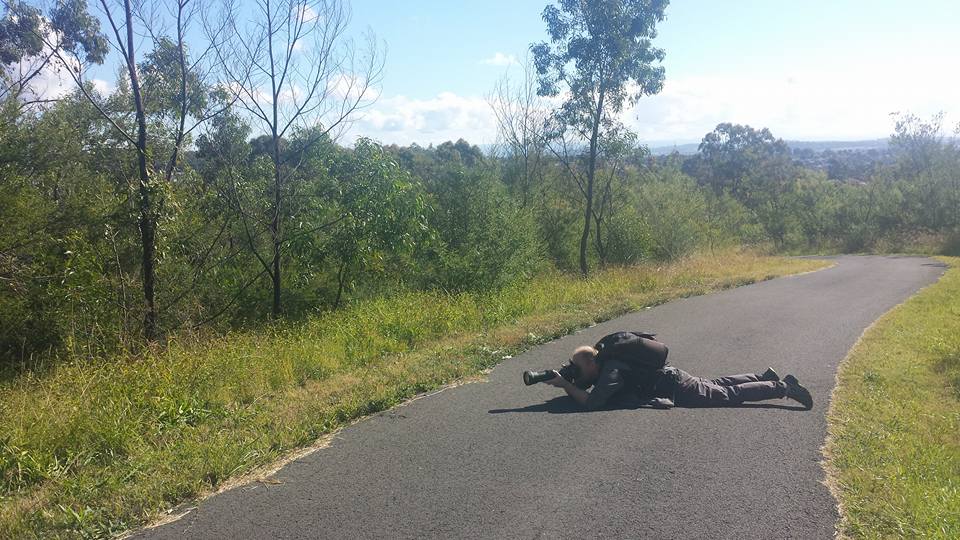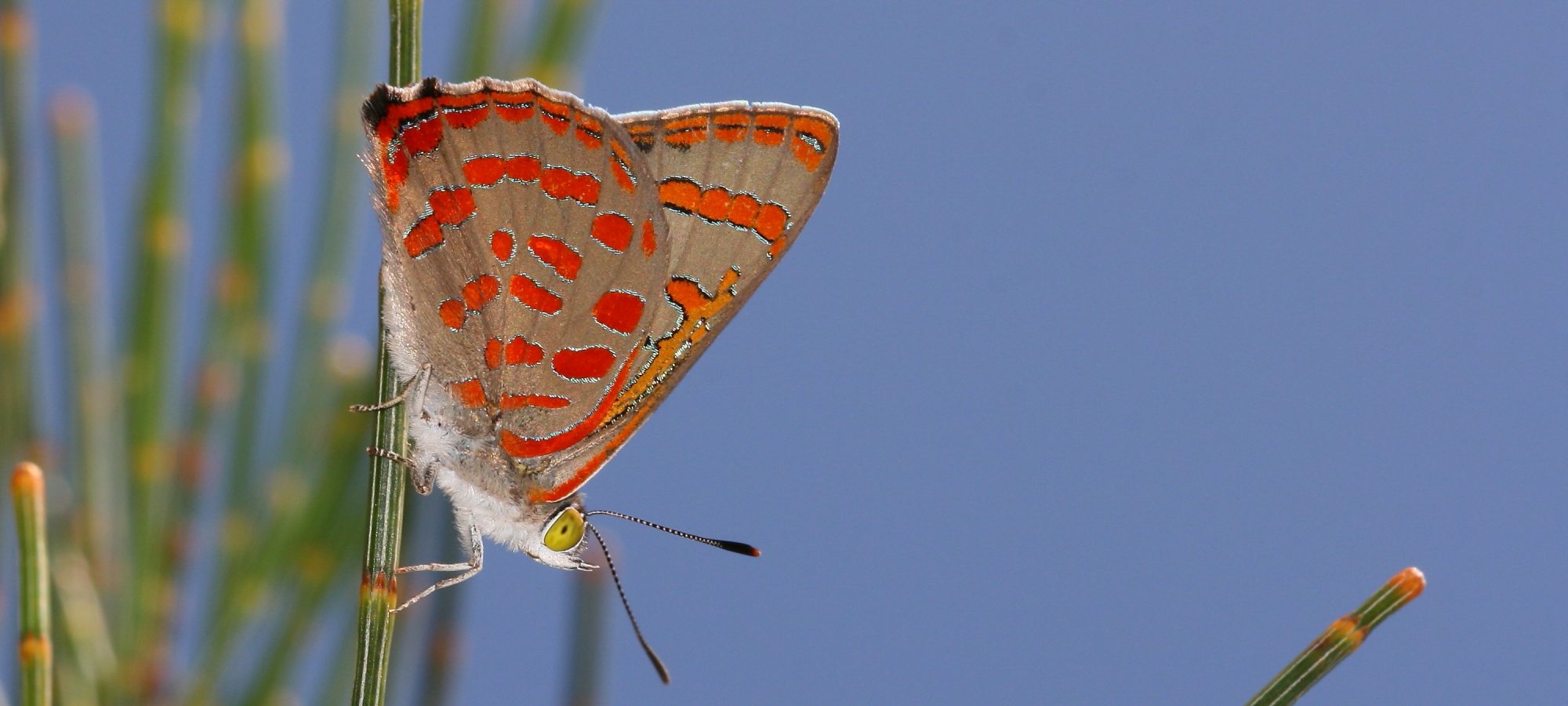
ABOUT
I have arguably the world’s geekiest hobby : I walk around taking photos of Australian butterflies and display the results on my website.
Lepidoptery, the study of butterflies and moths, is definitely a geeky subject if not quite in the same league as Trainspotting. It’s roughly on a par with birdwatching, though thankfully without my needing to seen in public with a pair of binoculars around my neck.
Photography is a much less geeky affair, in fact there are photographers who are downright cool, though nobody has ever accused me of that. I suspect that a large part of the appeal comes from the wide range of cameras, lenses and other equipment available for me to collect and lovingly play with when no-one’s looking; I doubt I’m the only hobbyist photographer with this particular fetish. I quickly gravitated towards Macro photography, avoiding cooler (and potentially profitable) subjects such as landscapes, sports and young women in skimpy clothing. It must be said, however, that a butterfly collector can look even more of a dweeb than a butterfly photographer; a large net on the end of a pole being the ultimate in unfashionable accessories.
Authoring websites is also a very nerdy pastime; normal people tend not to spend their days immersed in HTML, CSS and WordPress. I think the combination of this, the butterflies and the camera gear makes me qualify as some kind of Ubergeek. I doubt the reader will be shocked to learn that I have spent most of my working life in I.T. Thankfully the advent of “geek chic” has made this much more socially acceptable than it once was.
I don’t claim to be a particularly good photographer. My technique is really quite simple: if the butterfly remains still I will take as many photos as possible, in the hope that one or two of them are worth keeping. I am eternally grateful to the clever people who invented digital cameras; without them I would either have given up this hobby, or taken out several additional mortgages in order to buy and develop huge amounts of film.
Serious photographers could no doubt find much to criticise about my pictures, but to be perfectly honest the more artistic aspect of photography is not that important to me. My main priority is to get shots that make it possible to identify the species, preferably with fairly decent focus and light exposure. If the butterfly is feeling cooperative I try get shots of the its upperside and underside, and preferably from different angles. Composition is down my list of priorities. It’s not that I don’t appreciate and admire really well-taken photos, but butterflies are not easy subjects and I prefer to get a half-decent shot than to miss out on what would have been a great one had the butterfly been prepared to sit for another 10 minutes while I got all my camera settings right.
Nor am I all that good as a Lepidopterist. I don’t tend to use that term to describe myself, as it includes the study of moths and also implies a more scientific approach than I take. I’m not into moths, as there are simply too many of them, and I avoid the seriously scientific aspect in case it would spoil the fun for me; it’s my hobby and I want it to remain as such. Instead, I call myself a Butterflyer; I’m like the Sunday Driver of the Lepidoptery community. I have not met all that many others who are into butterflies, and most of them have been far more experienced and knowledgeable than me. My best quality has been my persistence in getting out into the bush with my camera, and getting enough practice to improve my butterfly knowledge and my photos.
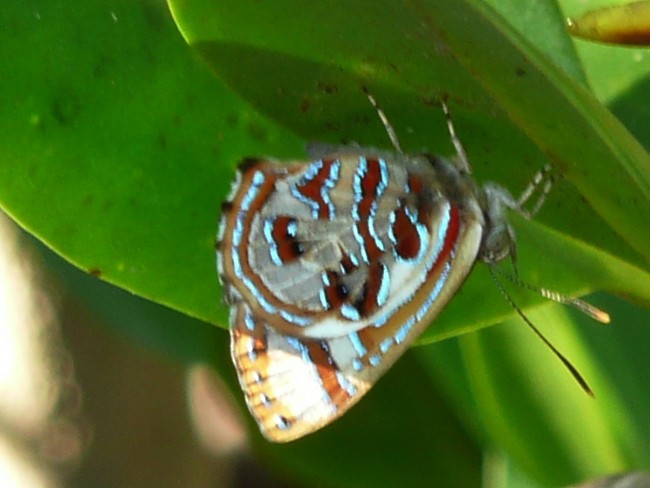
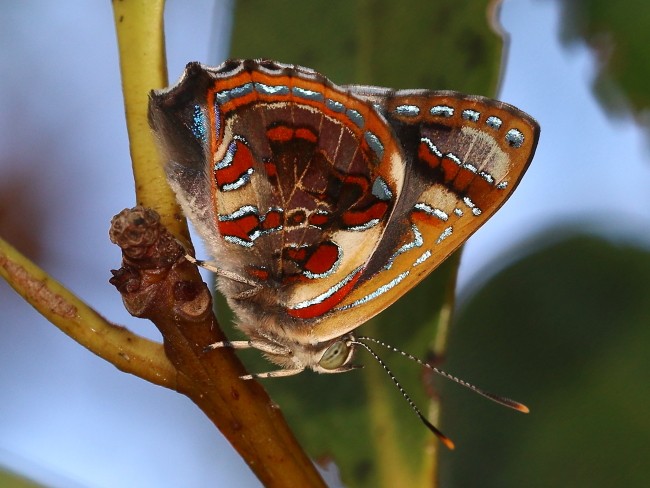
Geeky Tech stuff #1 - Camera Gear
Over the years I’ve used an assortment of equipment, starting with a little point-and-shoot camera back in 2004 and working up to a mid-range DSLR with a dedicated Macro lens. Here are some details of the gear I’ve used to take most of my shots, beginning with my current go-to setup :
Canon 70D camera
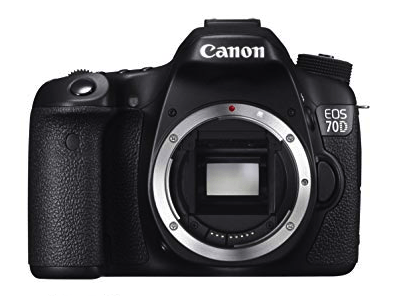
This was my second DSLR, which I bought to replace my ageing Canon 400D.
I’ve got some good results with it, though the camera has now started to misbehave. The On/Off switch has become very hard to move, the Flash sometimes refuses to pop up, and sometimes the camera gets confused about which shooting mode it is in. I’ve had times where the dial is pointing to Manual mode but the camera insists it’s in TV (Time Value) mode instead.
I’m hoping it can keep working for another year or two as I would prefer not to have to go to the expense of replacing it just yet.
Sigma 150mm f/2.8 EX DG OS HSM Macro Lens
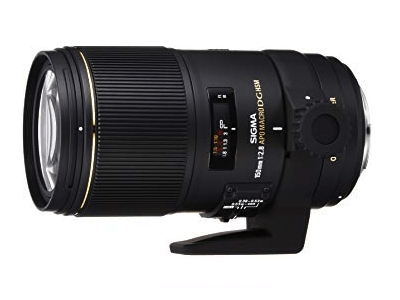
Many photographers say that the lens (or “glass” as they often call it) is more important than the camera body when it comes to taking good photos. Having never used a full-on professional camera I couldn’t really say if that’s true, but I do know that for insect photography a true 1:1 Macro lens really helps a lot.
There are some things about the Sigma 150mm Macro that aren’t ideal. It’s heavy, which makes it harder to avoid camera shake (the Optical Stabilisation helps with that), and its autofocus can be a bit slow.
Despite these drawbacks I think it’s a great lens, except for butterflies that refuse to let me get close enough and those that perch high up in the trees.
Other equipment
Sigma 150-600mm f/5-6.3 DG OS HSM Contemporary Lens
I bought this lens in the hope that it would be useful for taking photos of butterflies that don’t descend from the trees, as happens with some of the species that congregate on hilltops; I also intended to use it to photograph birds during the winter when there are few butterflies around. I’ve found it difficult to use at full zoom as it’s a big, heavy lens so it’s hard to keep the subject in focus, particularly when pointing it upwards at a butterfly perched in a tree. Its greatest moment so far was taking a shot of a male Ogyris ianthis (Golden Azure); it’s not a great photo but getting any shot of that species is special.
Canon EF 300mm f/4L IS USM Lens
This was my first longer lens, which has become redundant since I bought the Sigma 150-600mm. It’s a really good lens but its purchase was something of a mistake since it only gives twice the reach of my Macro so it’s really not that much better at getting shots of distant butterflies.
Panasonic Lumix DMC-FZ200 bridge camera
Much of the time I take this in my backpack instead of lugging about either of the big lenses mentioned above. Its 24x optical zoom gives it the equivalent of a 24-600mm range, so it can zoom as far as the very heavy Sigma 150-600mm lens whilst weighing a fraction as much. I read a lot of very positive reviews camera before I bought this, and watched a number of instructional videos on YouTube, but I’ve never really liked it much. I’m rarely happy with the image quality or the colours. I have no doubt that the fault lies with me; I think perhaps I’m too used to Canon cameras and never really came to terms with something different. When looking at getting a superzoom camera I wish I’d gone for the Canon Powershot SX50 HS instead; it has a 50x zoom and I’ve seen photos a friend took with one and they looked much better than I’ve been getting with the Panasonic. Unfortunately the SX50 has been superceded and its replacements don’t have such a good reputation, so I think I’ll have to wait a while before I look for another superzoom.
Canon EOS 400D camera
My first DSLR. At first I was very disappointed with the photos I was getting, because I had got used to using a point-and-shoot camera and was using auto-everything when taking butterfly photos. This generally resulted in quite long exposures, with the inevitable motion blur. I had to learn the rudiments of actual photography, such as the interaction of the f-stop, the ISO and the length of the exposure. Armed with this basic knowledge I started experimenting until I came up with some default settings which would allow me a reasonable chance of taking a decent photo under normal light conditions. All of a sudden my photos improved by leaps and bounds.
After several years of use and abuse this camera began to disintegrate. First the onboard flash stopped popping up unless I got my fingernails underneath and pulled it up. Later on pieces of the camera exterior began to fall off, leaving the inside open to the elements. I was still able to take photos but I decided the time had come to retire my trusty 400D, though I still keep it as a backup just in case.
Canon Powershot A70 camera
This is where it all started! Though it was just a little point-and-shoot camera I thought it was great, and in more capable hands it would have been. I was just a beginner and so I made every beginners’ mistake possible, plus a few that should have been impossible. I used the mighty A70 for almost all my photos up until early March 2007, when I finally dropped it one time too many. It had had a hard life and managed to survive a lot of knocks; even the time I dropped it into the muddy water at the edge of a swamp. After the last drop – on a busy road I was crossing – it struggled on for a few weeks, becoming increasingly erratic, before I finally bit the bullet at the end of July, sent the A70 to Camera Heaven.
Geeky Tech stuff #2 - Website
This website has gone through several iterations over the years, hopefully each one being an improvement upon the last. Currently it is a hybrid between the previous version, which I coded manually using a text editor, and a new dynanic website constructed using WordPress, which I have been endeavouring to learn as I go along. The WordPress site is essentially a wrapper to go around the old site’s content, which can be reached via the “Gallery” options in the menu at the top of this page.
I would have liked to fully integrate the photo gallery into WordPress but there are well over 300 pages featuring more than 8,000 photos, so it would take me an extremely long time to convert them all. Perhaps more importantly, I do not believe the navigation options available in WordPress would be suitable. In my old website I solved the problem of having a menu that would work with so many pages by using good old-fashioned Frames. The menu resides in a frame to the left of the page, whilst the content is displayed in a separate frame covering the main part of the screen. This was a very simple way around the problem, but it worked well. Later on, reading that the use of Frames is frowned upon by real website developers, I tried to replace them with a CSS-based alternative. I grappled with this for some time, but I could never get it to display the same in all the various web browsers so I eventually decided it wasn’t worth the trouble.
My main reason for getting into WordPress was to be able to add a Blog, as I thought one or two people might be interested in accounts of my Butterhiking outings, and maybe a few other butterfly-related posts as well. The WordPress pages should work well when viewed on a phone; and I have been able to make the photo Gallery fairly mobile-friendly as well, though I really think that sort of content is best viewed on a larger screen.
In case anyone’s interested, my WordPress pages are created using the following :
- Astra Theme
- Elementor page builder
- myStickyMenu plugin to keep the header menu visible at the top of the page
- WP Sticky Sidebar plugin to keep the sidebar visible on the Blog pages
- MailChimp plugin for the “Subscribe” form and to handle the emails I send to subscribers
- Duplicator plugin to make backups and to keep my development and production sites in sync.
- Code Embed plugin to allow me to embed the Javascript code I use to control which species is displayed in the Gallery page.
- Simple Custom CSS plugin to allow me to customise the appearance of the website beyond the limits of the Astra theme’s free version.
